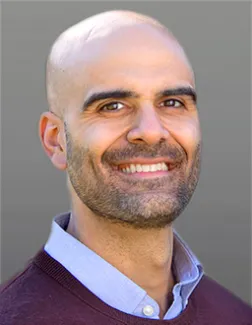

Information
Related Research Units
Research Overview
Gene expression levels are precisely regulated during development; quantitative perturbations to this process are a frequent cause of both rare and common human disease. However, most experimental tools that have been applied to study gene function are binary in nature. Therefore, our overarching goal is to develop and apply tools to quantitatively perturb gene regulation to understand both basic mechanisms of gene regulation and how this goes awry in disease.
Transcription factors (TFs), proteins that bind to noncoding regulatory DNA such as enhancers and promoters and modulate the production of RNA from target genes, are key drivers of developmental regulatory programs. TFs are highly dosage-sensitive; quantitative changes of 50% or less in TF levels frequently cause rare disorders or common trait variation.
We recently developed an approach to precisely modulate TF dosage in human stem cells and their derivatives; we are now using such tools to build quantitative, predictive models of how TF dosage impacts molecular, cellular, and morphological phenotypes, with the goal of identifying the regulatory elements, genes, and cell states that are most sensitive to TF dosage and thus drivers of disease.
Research Background
Sahin is an Assistant Professor in the Division of Gastroenterology, Hepatology, and Nutrition at Boston Children’s Hospital and the Department of Pediatrics at Harvard Medical School. He was a postdoctoral fellow with Joanna Wysocka and Jonathan Pritchard at Stanford University, where he used quantitative approaches to study transcriptional control in human variation and disease. He completed his Ph.D. with David Page at the Whitehead Institute and MIT, where he studied the evolution of genetic and gene regulatory sex differences in mammals, and his A.B. at Princeton University, studying cell cycle regulation with James Broach and non-equilibrium receptor cooperativity with Ned Wingreen. He has received a K99 Pathway to Independence Award from NIDCR, a Helen Hay Whitney Postdoctoral Fellowship, the OSSD New Investigator Award, and the MIT Presidential Fellowship. Outside of the lab, he enjoys learning about ancient history, playing and listening to music, and trying to avoid injury while playing soccer.
Publications
- Enhanced insights into the genetic architecture of 3D cranial vault shape using pleiotropy-informed GWAS. Commun Biol. 2025 Mar 15; 8(1):439. View Abstract
- Transfer learning reveals sequence determinants of the quantitative response to transcription factor dosage. Cell Genom. 2025 Mar 12; 5(3):100780. View Abstract
- Transfer learning reveals sequence determinants of the quantitative response to transcription factor dosage. bioRxiv. 2024 May 29. View Abstract
- DNA-guided transcription factor cooperativity shapes face and limb mesenchyme. Cell. 2024 Feb 01; 187(3):692-711.e26. View Abstract
- Joint multi-ancestry and admixed GWAS reveals the complex genetics behind human cranial vault shape. Nat Commun. 2023 11 16; 14(1):7436. View Abstract
- Systematic differences in discovery of genetic effects on gene expression and complex traits. Nat Genet. 2023 Nov; 55(11):1866-1875. View Abstract
- A genome-wide genetic screen uncovers determinants of human pigmentation. Science. 2023 08 11; 381(6658):eade6289. View Abstract
- DNA-guided transcription factor cooperativity shapes face and limb mesenchyme. bioRxiv. 2023 May 29. View Abstract
- Precise modulation of transcription factor levels identifies features underlying dosage sensitivity. Nat Genet. 2023 05; 55(5):841-851. View Abstract
- Systematic discovery and perturbation of regulatory genes in human T cells reveals the architecture of immune networks. Nat Genet. 2022 08; 54(8):1133-1144. View Abstract
- Decoding the Human Face: Progress and Challenges in Understanding the Genetics of Craniofacial Morphology. Annu Rev Genomics Hum Genet. 2022 08 31; 23:383-412. View Abstract
- Genome scans of facial features in East Africans and cross-population comparisons reveal novel associations. PLoS Genet. 2021 08; 17(8):e1009695. View Abstract
- 3D facial phenotyping by biometric sibling matching used in contemporary genomic methodologies. PLoS Genet. 2021 05; 17(5):e1009528. View Abstract
- Shared heritability of human face and brain shape. Nat Genet. 2021 06; 53(6):830-839. View Abstract
- Publisher Correction: Human-chimpanzee fused cells reveal cis-regulatory divergence underlying skeletal evolution. Nat Genet. 2021 Apr; 53(4):587. View Abstract
- Human-chimpanzee fused cells reveal cis-regulatory divergence underlying skeletal evolution. Nat Genet. 2021 04; 53(4):467-476. View Abstract
- The Intersection of the Genetic Architectures of Orofacial Clefts and Normal Facial Variation. Front Genet. 2021; 12:626403. View Abstract
- GWAS of three molecular traits highlights core genes and pathways alongside a highly polygenic background. Elife. 2021 02 15; 10. View Abstract
- Insights into the genetic architecture of the human face. Nat Genet. 2021 01; 53(1):45-53. View Abstract
- Quantitative analysis of Y-Chromosome gene expression across 36 human tissues. Genome Res. 2020 06; 30(6):860-873. View Abstract
- Mammalian germ cells are determined after PGC colonization of the nascent gonad. Proc Natl Acad Sci U S A. 2019 12 17; 116(51):25677-25687. View Abstract
- Conservation, acquisition, and functional impact of sex-biased gene expression in mammals. Science. 2019 07 19; 365(6450). View Abstract
- Conserved microRNA targeting reveals preexisting gene dosage sensitivities that shaped amniote sex chromosome evolution. Genome Res. 2018 04; 28(4):474-483. View Abstract
- Chemical sensing by nonequilibrium cooperative receptors. Phys Rev Lett. 2013 Jun 14; 110(24):248102. View Abstract